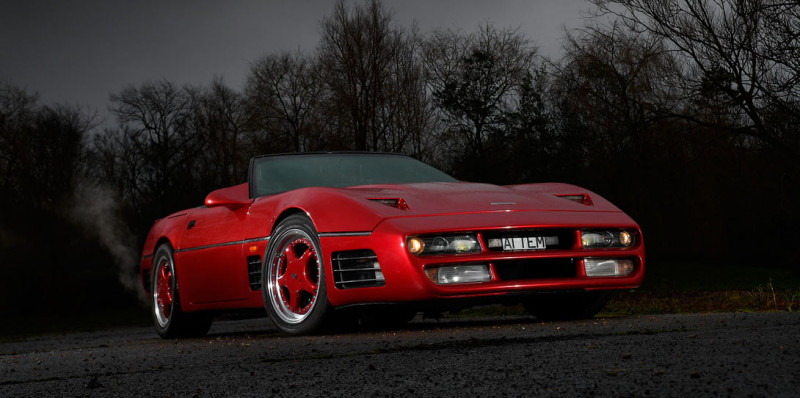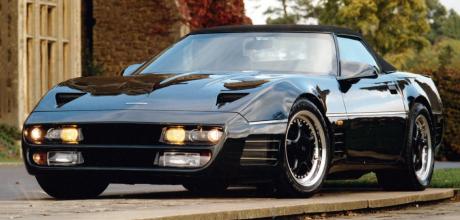1991 Jankel Tempest
Modified Corvettes? Man, they’re a dime a dozen… but British modified Corvettes? Meet the Jankel Tempest, Blighty’s contribution to the modified Corvette market…
There has rarely been a shortage of Chevrolet Corvettes modified by tuning firms.
However, by definition they’re invariably located in the US. The car pictured here, however, was an exception to the rule in that it was modified in Weybridge, Surrey. What’s more, it wasn’t strictly a Corvette. If only in the eyes of its creator, that was merely the donor car. To the rest of us, it remains one of the most spectacular makeovers ever perpetrated on the C4-generation model.

The Tempest was conceived by Robert Jankel, a man well-versed in making extreme cars for the super-rich. A former saloon car racer, this likable motor mogul earned a certain amount of fame (infamy) during the Seventies for the many creations offered by his Panther Westwinds concern. However, in the Eighties he ran several firms in parallel, which produced everything from armour-plated Rolls-Royces to fourdoor Ferraris via all manner of prototypes for mainstream manufacturers.
However, he subsequently took to making cars using his own name, the Bentley-engined, Jaguar-suspended Jankel Gold Label acting as a harbinger for the Tempest that arrived in 1991. The key difference was that in this particular instance, a production run that stretched into double digits was mooted.
The starting point was an L98 Corvette which was stripped to its constituent parts. And while the main ‘hard points’ that anchored the body remain unchanged, the ’shell here was made largely of Kevlar. The outline was still recognisably that of a Corvette, just one that seemed to have more vents sunk into it than seemed probable. Or necessary. There were a range of engine options, too. You could, in theory at least, have specified a Tempest with a factory LT1 unit or a 370bhp supercharged variant. However, it would appear that most – if not all – cars had a Vortex blown 6.3- or 6.7-litre V8 built in Los Angeles by famed engine tuner, TRACO. In its most powerful spec, the Tempest produced an alleged 535bhp at 5800rpm and an elephantine 608ft-lb of torque at 3800rpm. According to the Jankel brochure, this ensured a top speed of more than 200mph and a 0-60mph time of 3.3 seconds.
This wasn’t just hype, either. The Tempest recorded a 0-60mph time of a slightly slower 3.89 seconds at the MIRA proving ground in period. This was verified as the fastest-ever sprint for a, cough, ‘production’ car and appeared in the Guinness Book of World Records accordingly. Power was transmitted to the rear wheels by the same six-speed ZF ’box found in a Lotus Carlton (it also shared the same tall final-drive ratio), while the suspension was largely regular Corvette, but with trick dampers that could be adjusted from the cockpit. There were three settings: Touring, Sport and Performance.
The Tempest wasn’t cheap, though, that’s for sure. In this configuration, you would expect to pay around £121,000 (around £270,000 in new money). As to how many were made to the end in 1993, that rather depends on whose estimates you credit, but the general consensus appears to be around 35. The vast majority of those made headed to sandier climes, although one racing variant, which briefly appeared in the British GT Championship, ended up in New Zealand. The mooted follow-up model, the mid-engined Tempest II supercar, remained just a rendering, though, more’s the pity.


